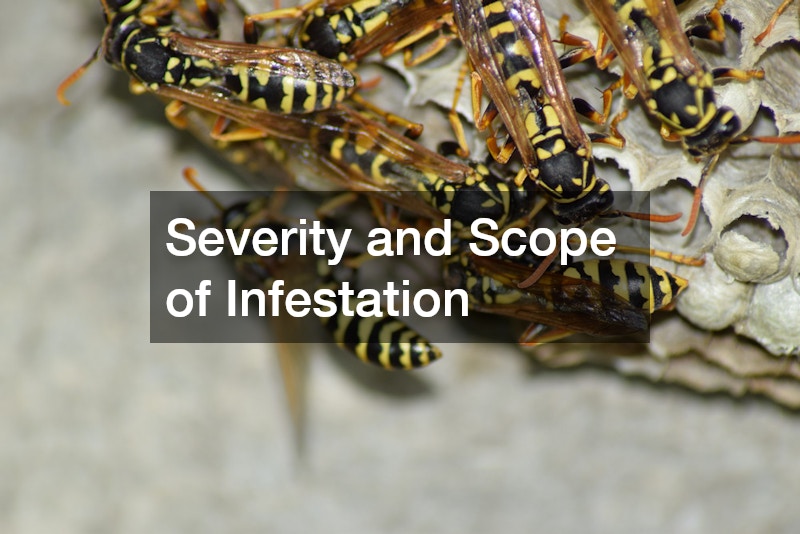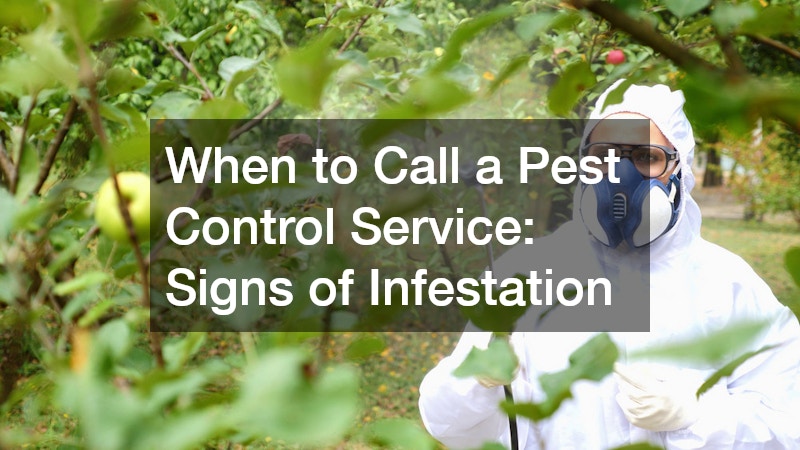Understanding when to seek help from a pest control service is essential to maintaining a healthy and safe living environment. This article explores the key signs of infestation and answers some of the most common questions people have about pest control services. We aim to help you identify when it’s time to call in the professionals.
Physical Evidence: What to Look For
One of the first and most obvious indicators of a pest infestation is physical evidence. Droppings are a common sign that pests might be present in your home. Additionally, finding nests made from chewed materials can confirm the presence of unwanted guests.
Damage to structures or belongings often accompanies infestations, and it’s crucial to inspect your home meticulously. Look for gnaw marks, holes, and other signs of wear that seem out of place. Such damage not only affects the aesthetics but can also harm the structural integrity of your home.
Unusual Sounds and Smells
Unusual sounds and smells can be tell-tale signs of a pest infestation lurking within your home. Scratching and rustling noises, especially during nighttime, may indicate rodents or insects moving within walls or ceilings. Paying attention to these sounds, particularly in quiet moments, can provide crucial clues about an infestation.
Pests might also emit distinctive odors that signal their presence even before they’re visually detected. The smell of stale or musty odors can indicate the presence of pests like mice or roaches. Trust your olfactory senses when they suggest something might be amiss.
Behavioral Changes in Pets
Our pets often have heightened senses compared to humans and can detect pests through sound and smell. If your pet is acting unusually anxious or fixated on certain areas of your home, it could signify a pest issue. Monitoring your pet’s reactions and behaviors can provide valuable insights into hidden pest activity.
Pets may become agitated or overly alert in spaces where pests frequent, like pantries or under furniture. Cats and dogs might scratch, bark, or meow persistently at particular walls or cabinets, indicating they sense an intruder. Paying attention to these signals from your pets can help identify a possible pest presence.
Health Risks to Humans and Pets
An ignored pest infestation poses significant health risks to both humans and their pets. Insects and rodents can carry and transmit diseases, resulting in health complications like salmonella, hantavirus, and allergies. Being proactive in addressing an infestation can minimize these potential health hazards.
Pests can exacerbate existing health conditions such as asthma and allergies by introducing allergens into the home environment. This is especially concerning for households with children or elderly individuals who might be more vulnerable to respiratory issues. Staying vigilant about pest control helps safeguard the well-being of all residents.
Property Damage Concerns
Beyond the health risks, pests can cause considerable property damage if their presence is not addressed swiftly. Termites, for instance, consume wood and can weaken the structural integrity of your home. Such damage can result in costly repairs, underscoring the importance of early intervention.
Rodents have a notorious reputation for gnawing through electrical wires, which can create fire hazards and necessitate expensive electrical repairs. Additionally, pests can damage personal belongings, such as clothing or books, by chewing or nesting within them. This variety of potential damage emphasizes the financial burden an infestation can impose.
Infestation Growth Over Time
If left unchecked, pest infestations can grow exponentially, making them more difficult and costly to manage over time. A delay in addressing the issue allows pests to reproduce and establish larger colonies. As their numbers increase, so do the risks associated with their presence.
An infestation that is initially manageable with simple measures can quickly escalate into a full-blown problem requiring professional intervention. The longer pests inhabit your space, the more entrenched they become and the harder it is to eradicate them. Early detection and response are crucial in preventing such escalation.
Severity and Scope of Infestation
Evaluating the severity and extent of an infestation is critical in deciding whether to consult a professional pest control service. If you’re observing widespread evidence of pests throughout your home, professional intervention is likely necessary. A pest control expert can accurately assess the situation and recommend appropriate measures.
Certain pest species, such as termites or bed bugs, can often require more technical expertise and specialized treatments to eliminate effectively. If multiple areas or rooms are affected or if health risks are increasing, it’s time to involve professionals. Their knowledge on pest behaviors and best practices ensures more comprehensive management.
Preventive Measures and Maintenance Tips
Preventing infestations is always more effective and less costly than addressing them after the fact. Regular home maintenance, such as sealing cracks, managing waste, and maintaining cleanliness, can deter pests from entering your home. Implementing these preventive strategies minimizes the likelihood of needing professional pest services.
A timely response to pest infestations not only protects your home and health but also prevents more significant issues from developing. Recognizing the signs, understanding the risks, and knowing when to call a professional can help you maintain a pest-free environment. Investing in preventive measures and professional guidance ensures the sanctuary of your home remains intact.






